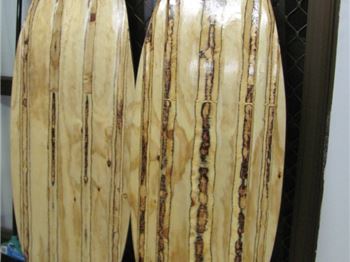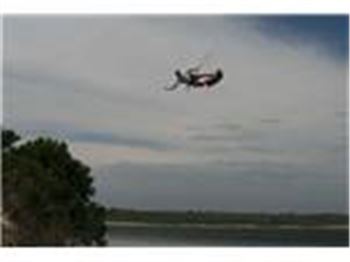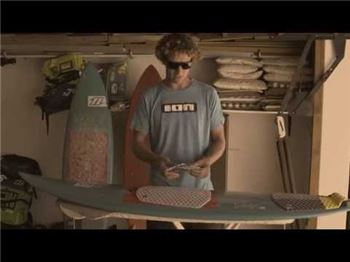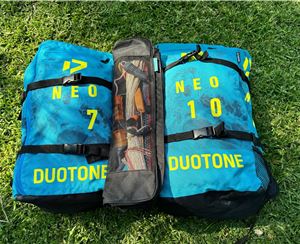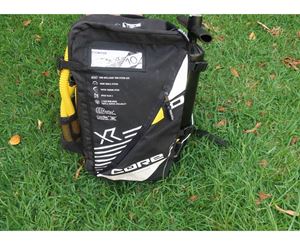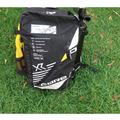Wave Riding Tips by Ben Wilson - Part 1
Hey everyone, Seabreeze has asked me to do a series of articles on wave technique and tips for the Seabreeze readers. In the first article I thought I'd answer some of the most common questions I get asked from kiters that are getting into the waves. - Hope you find the info helpful - Ben Wilson
This is part 1 of the Ben Wilson instructional series which provide simple lessons and how-to's on kitesurfing in the waves.
What sort of kiteboard should I get?
Definitely get a surf board, There are 2 options here epoxy and polyester ( regular surfboard construction). Both have their benefits the epoxy is lighter and tougher and will handle smaller hits and knocks without getting damaged. Epoxy is also more bouyant which can make them a little bouncy in chop. Poly boards have a bit more flex and sit in the water giving them a smoother feel in the chop. You have to be way more careful with a poly board and generally they will not last as long an epoxy. Remember both boards will still break if you place extreme force on them.
My advice to newcomers is to get an epoxy designed by a surf shaper. In the long run you will get better value out of an epoxy as it will last longer.
If you are broke just grab yourself the same board that you would surf and get going on that - you can pick up boards that will work for as little as $100 which makes it pretty affordable to get into the waves.
What do I ride? - I ride both - When you see me on a polyester board I am trialing new kiteboard designs that will appear in the next production board form Slingshot.
What size surfboard?
I ride the same size board as I surf. This is ideal because I can travel with fewer boards and I can surf the board in the morning and kite it in the afternoon. However you need to be fit to surf a smaller board.
A good rule of thumb is to get a board 2'' longer than you. Eg I am 6'foot and I ride a 6'2. If you are built like a brick then get a board with a bit more volume or a touch more length.
Do I need straps on my surfboard?
 This is tricky and is different for everyone. We have had some people come to our wave clinics who have never been on a directional before and start riding strapless straight away. So it is possible to learn without straps. Most people feel more comfortable in straps and then progress to strapless.
This is tricky and is different for everyone. We have had some people come to our wave clinics who have never been on a directional before and start riding strapless straight away. So it is possible to learn without straps. Most people feel more comfortable in straps and then progress to strapless.
Straps are useful in some situations and I still use them from time to time.
If its really nuking like 30+ and really bumpy I sometimes strap up to get the most out that session. Straps also let you experiment with airs and you can then progress those moves to strapless kitesurfing.
Why do you unhook so much?
Unhooking gives me a much more natural stance when I riding and I use the power of the wave to ride the wave instead of the power of the kite. Being hooked in tends to pivot you on your waist where the harness is. This doesn't allow for a natural surfing style as when I am unhooked i have a fully open stance and can surf the wave the same way as i do without the kite.
I tried unhooking and can't hold the power.
90% of the people we have come across don't have their kite trimmed correctly to unhook.
What you need to do is have your kite in its optimal position when the bar is pulled down against chicken loop. That way when you unhook the kite keeps flying perfectly.
If you unhook and kite begins to stall or fly backwards it means it is oversheeted - Pull on the depower strap until you achieve optimal kite position with the bar sheeted fully in.
What size kites...will my freestyle kite work in the surf?
Yes it will but generally you don't need as much power from your kite as you are on a bigger board and you really just want enough power to get you around in the surf.
 I am using the REVS from Slingshot and really just use 2 sizes. I am 84kg.
I am using the REVS from Slingshot and really just use 2 sizes. I am 84kg.
The 11m works for me from 10 kts up to 20. If I can't unhook on the 11 then I change to the 7m.
Again we see a lot of people with too much kite up when they surf. The smaller the kite the quicker it turns and its also easier to shut down the power when you are on a wave.
Next article - #2 - Tips for getting out in the surf and how to catch waves.
www.benwilsonsurf.com

